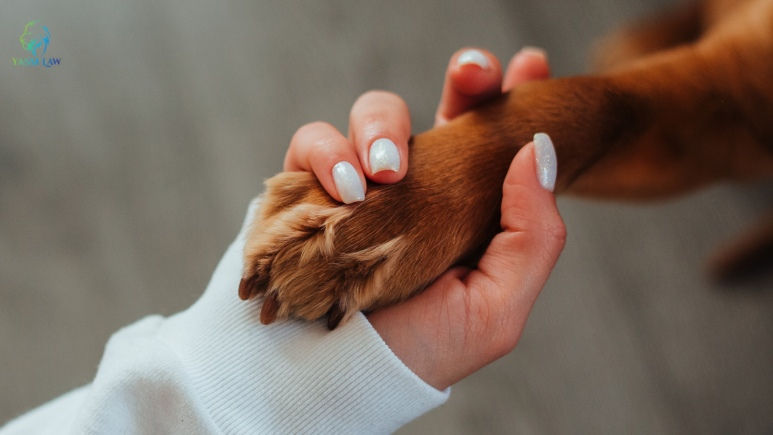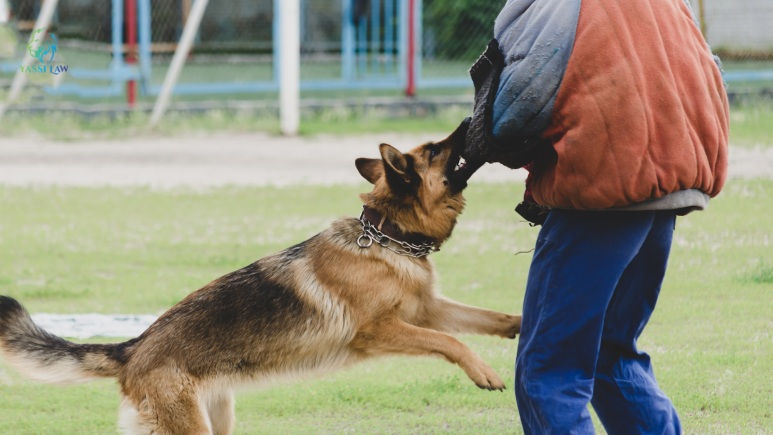Animal Owner Liability: What You Need to Prove After a Dog Attack
- Reza Yassi
- Jul 8
- 6 min read
Updated: Jul 9

Dog attacks can happen fast and without warning. When they do, the pain, shock, and fear persist long after the bites have healed. New York has seen big changes in law around who pays for these injuries. Owners now face more responsibility, and victims have new ways to seek help. If a dog has bitten you or someone you love, knowing about dog owner responsibility is very important.
Laws have shifted, so the steps for proving who should pay after a dog attack are different than before. If you want to be sure about your rights and your next move, keep reading. This guide will explain what you must prove after a dog attack, show how court decisions affect your case, and outline what to do next.
Understanding Animal Owner Liability After a Dog Attack
Animal owner liabilities define when pet owners must pay if their animals cause harm to others. New York revised these laws after recent court rulings. Now, both owners and victims need to understand what the law states to protect themselves.
For years, New York followed rules that made it difficult for victims to win unless they could prove the dog was known to be dangerous. Courts considered “strict liability” and “negligence.” Now, with cases like Flanders v. Goodfellow, owners might be held responsible even if the dog never bit anyone before.
To learn more about the background of these legal changes, see the Flanders v Goodfellow case overview.
Strict Liability vs. Negligence Standards in Dog Attack Cases
Strict liability and negligence are two big ideas in dog bite law.
Strict liability means the owner is responsible if their dog injures someone, without the victim needing to prove the owner did something wrong before the attack.
Negligence means the owner must have acted carelessly, such as not fixing a broken gate or allowing a dangerous dog to run loose.
Previously, in New York, when a case came to trial, courts would consider whether the dog had bitten before or had shown itself to be dangerous. Now, both conditions may apply. These rules now strengthen a victim's case when seeking that assistance.
How Recent Court Rulings Impact Animal Owner Liabilities
In the Flanders v. Goodfellow case, the court said an owner can be held responsible even without proof of past attacks.
In April 2025, a major court decision expanded these rules. Now, victims do not always have to show the owner knew about past bites or attacks. The law considers it sufficient if the owner was careless or failed to keep the animal under control. You can read more in the Expanded Animal Owner Liability Case, which explains how these changes impact dog attack claims.
What Victims Must Prove to Establish Dog Owner Responsibility

Proving dog owner responsibility is now less complicated, but you still have to show some key facts. Most victims in Manhattan, Brooklyn, and all of New York need to prove at least three things:
The owner had the duty to keep the dog under control.
The animal was dangerous, or the owner was careless.
The owner's action or lack of action caused the attack.
A personal injury lawyer in Manhattan or Brooklyn can help put together the proof you need.
Proving Ownership and Dangerous Propensities
You must show who owns the animal. This can be done with:
Pet licenses or vet records.
Testimony from neighbors or witnesses.
Security camera footage.
Next, you may show the dog had “dangerous propensities.” This means proving the dog acted mean or wild before. Signs include:
Past bites, lunges, or jumps at people.
Complaints from others about the dog.
Notes from the owner or neighbors about the dog's behavior.
If there is no history, lawyers help look for signs the owner ignored limits, like open fences, broken leashes, or warnings from others.
Or Linking the Attack to the Owner’s Negligence or Failure to Control the Animal
A court wants to know how the owner acted before the attack. Did the owner follow city rules, use a leash, or keep the fence locked? “Negligence” occurs when the owner fails to take the actions that a prudent owner would take under similar circumstances.
To prove this, you need good evidence:
Photos or videos of an unlocked gate or a loose leash.
Police or animal control reports.
Repairs or vet bills showing past issues.
Statements from witnesses who saw the owner ignore warnings or rules.
Good records and prompt reports significantly strengthen your case. Even a statement from a neighbor about seeing the dog loose helps show what happened.
Legal Options and Next Steps After a Dog Attack

After a dog attack, start by taking care of your health. Seek medical treatment and keep all records. Then, consider your legal options. New York’s laws are evolving, and each year offers more ways to get help following these attacks.
A personal injury lawyer in Brooklyn or Manhattan can explain your rights and help gather the evidence. You may be able to get money for:
Medical bills and future treatment.
Lost income from missing work.
Pain, scars, or ongoing fear.
The new law updates mean owners cannot escape by saying, “This has never happened before.” Your lawyer helps prove the facts and push for a fair result, even if the dog was never violent in the past.
The Bottom Line
Animal owner liabilities and dog owner responsibility have changed in New York. The new rules help victims get justice after a dog attack. If you are a victim, you need to show who owns the animal, how the owner failed to keep the dog under control, and how this caused your injury. Strong evidence matters. Acts fast, get the right help, and work with a personal injury lawyer to protect your rights. These laws are meant to keep people safe and hold owners responsible. Do not wait. Your quick action can make all the difference.
A Quick Note:
This blog post is not legal advice, but it can help you better understand your rights and what steps to take after a dog attack.
About Us:
Yassi Law PC is proud to help people across New York understand the law and feel more confident when tough situations arise. Whether you are dealing with a dog bite case, a possible lawsuit, or just want legal guidance before something goes wrong, we are here for you.
If you have been hurt or if you want to make sure you are legally protected in the future, do not wait. Let our team help you make informed, smart choices. Reach out today—your peace of mind matters.
FAQs
1. What should I do right after a dog attack in New York?
First, get medical help—even if the bite seems small. Then try to gather details like where it happened, who owns the dog, and if anyone saw what happened. Take photos of your injuries and the area, and report the attack to animal control or the police.
2. Can I still take legal action if the dog never bit anyone before?
Yes, thanks to new court rulings in New York. Even if the dog had no history of biting, the owner can still be responsible if they were careless. That means you can still have a strong case if the owner did not control the dog properly.
3. What proof do I need to win a dog bite case?
You will need to show who owns the dog, that they did not take proper care, and that their actions (or lack of action) led to your injury. Things like medical records, photos, witness statements, and video footage can really help your case. A lawyer can help you gather and organize this evidence the right way.
4. How much money can I get after a dog bite injury?
It depends on how serious your injuries are. You may get money for medical bills, time missed from work, pain, and even emotional distress. Every case is different, but a lawyer can help you understand what your claim might be worth.
Disclaimer:
This article is for informational purposes only and does not constitute legal advice. Although I am an attorney, I am not your attorney, and reading this article does not create an attorney-client relationship. For advice pertaining to your specific situation, please consult a qualified attorney licensed in your area.

